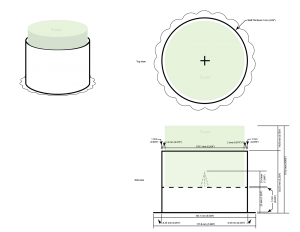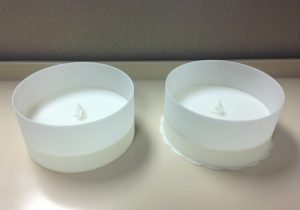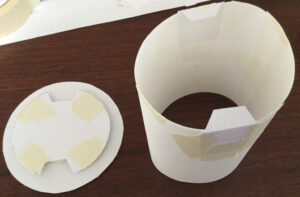 |
 |
 |
|---|
Project Background
The goal was to design two new floral foam containers for Smithers-Oasis. They needed one container without a decorative flange and one with a decorative flange. The containers would be plastic like most other containers they produce and fit a new diameter of floral foam they created for the new customer.
The Challenge
The project had an extremely tight deadline of a couple of days to make the sale to the customer.
What I did
I met with the client to review the project and brainstorm ideas. One of the solutions was a hybrid version. The client liked the hybrid version idea as it offered some benefits in the form of flexibility and cost savings, as well as shipping and shelf space savings.
The hybrid version was a container designed without a flange as the base product with the ability to twist a flange onto the bottom as an optional accessory. The design provided stop slots on the container as feedback to let the person know when the flange taps are tight. The stops also prevent a person from twisting the flange too far and disengaging the flange or providing a partial connection.
The benefits of having the flange as a separate accessory were:
- No dead space in the shipping box
- Fitting more of them in a box
- Using fewer packing materials
If the flange and the base are in one piece during shipping, the box would require additional packing materials between the containers to prevent the flange from getting damaged. It would also mean fewer products in the box as the flange would take up extra space compared to the container without the flange. As for shelf space, they could put more containers on the shelf since they would not have to display two versions and hang the flanges. Having one container on the stand also allows the opportunity to show another product, giving the company more exposure.
With the client interested in the hybrid solution, I started sketching and making paper prototypes of the products and figuring out how they would connect. The prototype experiments showed that the twisting connection method was better for taking the flange on and off than snapping the pieces together. The concern with snapping was that a customer might break some flanges when separating them. The problem with both methods is that the container seemed less sturdy than we would have liked when the flange was attached; however, this might be fine with SLA or plastic model. Due to the extremely short deadline for this project and our needing more time to test the product’s sturdiness using plastic, we went with two separate containers where each version would be injection molded as a single piece. The client was happy with this solution, which meant we would make the deadline.
We could have solved the hybrid version problem provided we were not under the extremely tight deadline. Ultimately, we were confident the customer was getting two solid products to help support their business.
